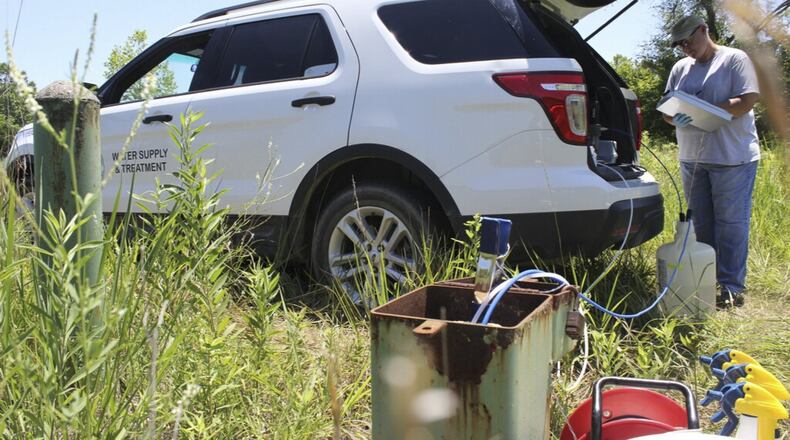FIRST REPORT: Chemicals found in local water prompt new alerts to customers
“They seem to be in the same range. They seem to be pretty stable,” said Michael Powell, Dayton’s Department of Water director.
Virtually unchanged, the results mean PFAS are not on the rise and the water stays safe to drink, Powell said.
The chemical compounds turned up in March at Dayton’s Ottawa Water Treatment Plant, the first time the compounds — currently believed to be safe when below 70 ppt for lifetime exposure — were detected in water after the treatment process.
Powell said PFAS have likely been in treated water all along, but they were only first detected due to a new testing process.
“Keep in mind that the levels were so low that it wasn’t even detectable with some of the previous methods,” he said.
PFAS at the levels detected in Dayton water, however, may not be as benign as first believed.
A new Centers for Disease Control and Prevention draft study indicates the level of PFAS at which health risks might be expected is seven to 10 times lower for these chemicals: startlingly close to the 7 to 12.5 parts per trillion recently detected in water leaving the Dayton plant. The report now open for comment was released by the centers’ Agency for Toxic Substances and Disease Registry.
RELATED: Draft study shows chemicals could be bigger threat to Dayton water
The 70 ppt upper threshold for exposure is a health advisory level, not a more stringently-enforced U.S. Environmental Protection Agency (EPA) maximum contaminate limit reached through a lengthier Safe Drinking Water Act rules-making process, said James Lee, an Ohio EPA spokesman.
“These are not enforceable rules but are advisories issued by U.S. EPA based on the current research,” Lee said. “Ohio EPA can then use those health advisory levels to require public water systems to take specific actions such as sampling schedules and other steps out of an abundance of caution.”
It was precisely this type of Ohio EPA request made of Dayton that resulted in March, April and May testing for PFAS, Lee said.
Exposure to PFAS may be responsible at certain levels for testicular and liver cancer; changes in cholesterol; low birth weight in newborns; liver tissue damage; and effects on the immune system and thyroid, human epidemiology and animal testing studies suggest, according to the U.S. EPA.
The precise origin of the compounds detected in the treated water that goes to about 400,000 people in the region is yet unknown. But regulators have prodded both the city of Dayton and Wright-Patterson Air Force Base about the chemicals once used as a fire retardant, ones the Ohio EPA has directed the Air Force to clean up.
Both Dayton and Montgomery County, which purchases water from the city, started voluntarily notifying users about the presence of the substances earlier this month.
The city has more than 300 monitoring wells, adding 80 in the last six months. Already, a number of wells have been shut down in fear of drawing more PFAS into the system, Powell said.
The department’s environmental team is working to determine how to better restrict PFAS movement in a Dayton well field. An outside environmental engineer has been called in to help the city determine the extent PFAS are effectively mitigated through the current sand filtration treatment process or whether more needs to be done, Powell said.
“There are some techniques that have been proven effective, granular activated carbon is being used by some utilities,” he said. “There are other methods that are being evaluated as well. We are working with some experts in the field with helping us to determine what’s the best method to remove these sorts of contaminants from various different levels from water systems.”
STAYING WITH THE STORY
Clean water is an abundant and vital resource for the entire region. We continue to cover the effects of contaminants to the Great Miami Buried Valley Aquifer, the principal source of drinking water for about 2.3 million people.
About the Author

